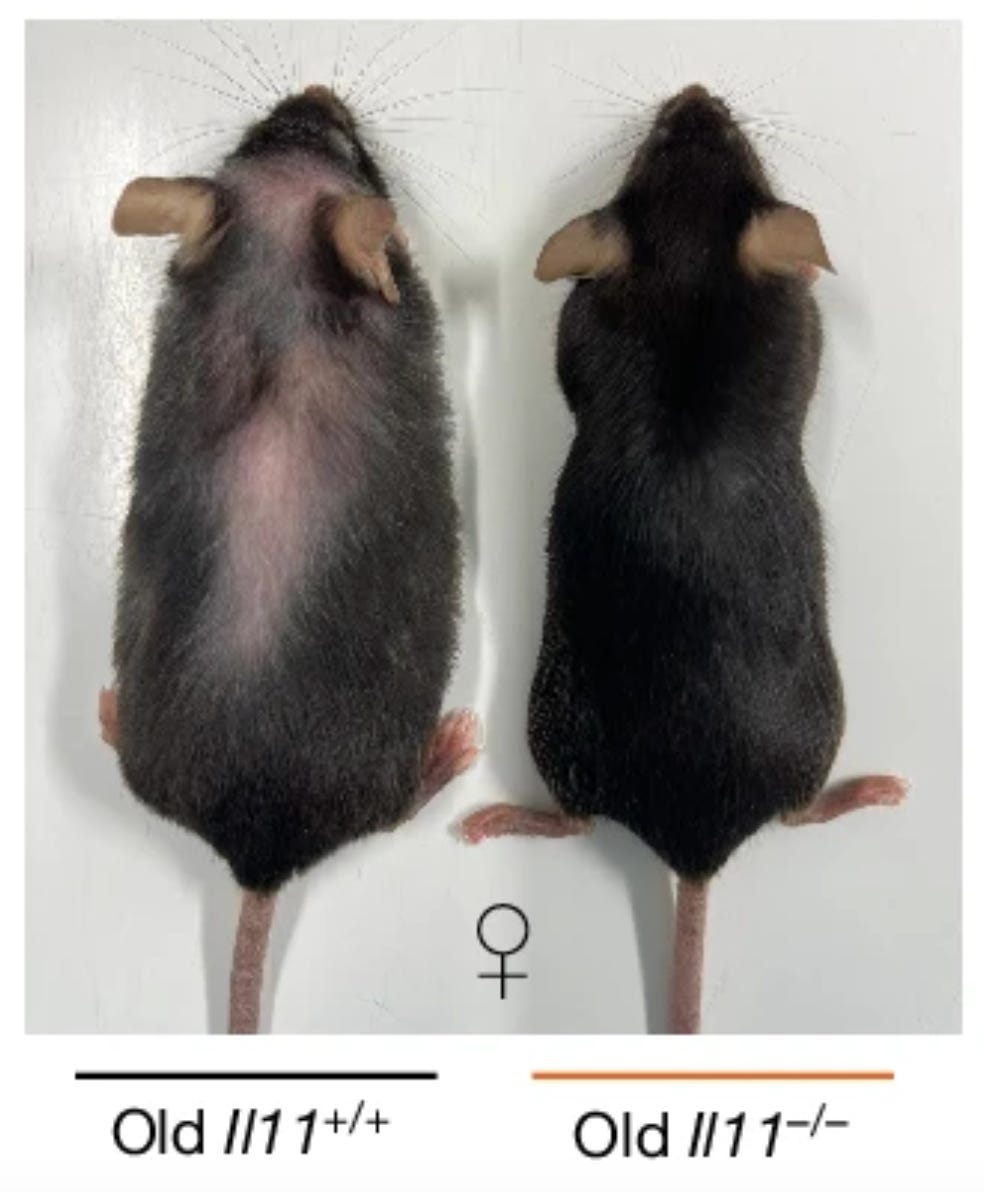Longevity revolution: How close are we to living past 120
The anti-aging research boom, its challenges, and the promising therapies that could redefine human healthspan.
A recently published article in Nature ignited conversation about human longevity. Who wouldn’t want to live to 120? Looking at photos of some centenarians might make you hesitate. But what if you knew you could live well past your centennial and maintain your physical and mental strength?
Why is anti-aging research in its infancy?
The primary reason we do not yet have approved drugs specifically targeting aging is due to the complex nature of aging and the regulatory landscape. Aging is not currently classified as a disease by major health authorities like the FDA and CDC. This classification significantly impacts the development and approval of anti-aging drugs. Without the disease designation, it is challenging to conduct clinical trials and obtain approval for drugs intended to slow or reverse aging.
The FDA views aging as a natural process, which creates challenges for the approval of drugs aimed specifically at slowing or reversing aging. Instead, such drugs must target specific age-related diseases to demonstrate efficacy and gain approval. This regulatory stance makes it difficult for pharmaceutical companies to justify the investment required to develop such drugs.
But extending the human healthspan (not necessarily lifespan) could have significant implications for global health and economies. Healthspan refers to the number of years someone remains healthy and free from chronic disease and it is a measure of the quality of life. This age-associated health deterioration results in a higher prevalence of chronic diseases, reduced muscle function, and decreased overall health status. But extending healthspan by just one year could have trillions of dollars in economic benefits in the U.S. alone.
Additionally, conducting clinical trials in older populations is inherently challenging due to the presence of multiple co-morbid conditions and the need for long-term studies to demonstrate efficacy and safety.
Current research and potential therapies
Despite these challenges, there is a growing interest in developing drugs that can extend healthspan and potentially lifespan. Several promising compounds and therapies are under investigation. You may have heard of metformin (my personal favorite), but many other candidates like resveratrol, rapamycin or senolytics.
Originally developed for type 2 diabetes, metformin is being studied for its potential to delay aging-related diseases such as dementia, heart disease, and cancer. It may also significantly reduce body weight, total cholesterol, and LDL levels in the elderly. Metformin has a well-established safety profile, making it a strong candidate for repurposing as an anti-aging drug.
For example, Rejuvenate Biomed, a biotech company headquartered in Belgium, has announced promising results from a phase 1b clinical trial of RJx-01 (metformin combination) for the treatment of sarcopenia. Sarcopenia is a condition characterized by the progressive loss of muscle strength and function, affecting up to 50% of those aged 80.
The trial demonstrated that RJx-01 significantly improved muscle strength, function, and fatigue resistance in participants. They also aim to test RJx-01 for treating osteoporosis and other aging-related diseases. Additionally, they plan to explore the combination of RJx-01 with GLP-1 weight loss drugs.
Wake Forest University School of Medicine is conducting the Targeting Aging with Metformin (TAME) trial to test whether those taking metformin experience delayed development or progression of age-related chronic diseases. However, metformin is a generic drug, which discourages pharmaceutical investment.
Other candidates to be repurposed as anti-aging drug include so-called senolytics. Senolytic compounds target old cells, which accumulate with age and contribute to age-related diseases. By clearing these cells, senolytics may improve healthspan and reduce the incidence of age-related conditions.
For example, fisetin is a senolytic naturally found in strawberries, apples, mangoes, tomatoes, onions, or nuts that has shown strong anti-inflammatory, anti-oxidant, anti-tumorigenic, anti-invasive, anti-angiogenic, anti-diabetic, neuroprotective, and cardioprotective effects in cell culture and in animal models relevant to human diseases.
The Mayo Clinic is currently conducting a clinical trial (NCT03675724) (primary completion expected in October 2024) on the efficacy of the fisetin in reducing inflammatory factors in blood in elderly adults and in reducing frailty and markers of inflammation, insulin resistance, and bone resorption in the elderly.
Interleukin-11 therapy: A new frontier
Aside from already existing therapies, there is a new potential compound that has shown promise in anti-aging research.
A recently published article in Nature accidentally identified interleukin-11, a pro-inflammatory cytokine, as a potential target for anti-aging therapy. Interleukin-11 is a pro-inflammatory cytokine that increases with age and is linked to various age-related conditions, including chronic inflammation, fibrosis, metabolic disorders, muscle wasting, frailty, and cardiac fibrosis. By blocking IL-11, the researchers were able to mitigate these effects, suggesting that IL-11 plays a crucial role in the aging process.
Genetic deletion or pharmacological inhibition of IL-11 in mice extended their median lifespan by over 20% and improved various health parameters, including reduced cancer-related deaths and better metabolic health.
I mean look at this difference! Both animals are the same age, yet you can see that the one on the right looks so much healthier. The mice on the right were also leaner (had less fat and more muscle mass), and had much lower frailty score, similar to young mice.
The younger looking mice also had lower cholesterol and triglyceride levels, fewer cancers and higher full body strength compared to the older looking mice.
Anti-IL-11 therapies are currently in early stage clinical trials for fibrotic lung disease, and there is potential for these therapies to be repurposed for aging-related conditions. The translational potential of IL-11 inhibition in humans is promising, given the minimal side effects observed in animal studies.
That being said, we have a saying in my field: “mice lie and monkeys exaggerate.” This is because not all research in animals can be directly translatable to humans. Experts caution that mice do not naturally develop some chronic diseases common in humans, such as atherosclerosis and Alzheimer’s, unless genetically modified. Therefore, further research is needed to confirm these findings in humans.
Longevity company spotlight
Anti-aging biotech startups are currently experiencing a surge in popularity, attracting significant investment from high-profile figures like Jeff Bezos and Sam Altman. This influx of funding highlights the growing interest in the longevity industry, with many wealthy individuals eager to explore ways to extend their own lives. A concept long familiar in both science fiction and now, increasingly, in reality.
Altos Labs is a high-profile startup focused on cellular rejuvenation programming to restore cell health and resilience, backed by significant investment, including from Jeff Bezos.
Longeveron (LGVN) specializes in regenerative medicines for chronic and life-threatening aging-related conditions, particularly in the areas of cellular therapies. They have two clinical trials underway in the U.S. to evaluate the effectiveness of Lomecel-B, a potential treatment for improving physical function, reducing inflammation, and enhancing the quality of life in frail elderly patients.
Other companies like TNF Pharmaceuticals (TNFA) (formerly MyMD Pharma) have drugs in their pipeline that target frailty. A key development in their pipeline is MYMD-1, which recently showed positive phase 2 trial results in treating sarcopenia/frailty. The drug effectively reduced key inflammatory biomarkers and met all safety and tolerability goals. With these promising results, TNF Pharma is preparing for phase 3 trials.
Another company invested in aging, Rubedo Life Sciences, focuses on developing innovative therapies aimed at keeping individuals biologically young by targeting senescent cells. Rubedo utilizes its proprietary Alembic platform, an AI-driven drug discovery system that combines advanced computational algorithms and chemistry. This platform leverages single-cell RNA sequencing and other omics data to identify specific druggable targets associated with pathologic senescent cells.
Lastly, Genflow Biosciences, a U.K.-based biotech company, is developing innovative gene therapies aimed at halting or slowing the aging process in both humans and dogs, with a focus on reducing age-related diseases. Their lead compound, GF-1002, is an adeno-associated virus vector-based (AAV-based) gene therapy administered via intravenous infusion, which delivers copies of the Sirtuin-6 (SIRT6) gene variant found in centenarians into cells, potentially promoting healthy aging.
While the classification of aging as a non-disease poses significant regulatory challenges, scientific advancements are paving the way for potential anti-aging therapies. Drugs like metformin, rapamycin, and senolytics, along with emerging therapies targeting IL-11, offer hope for extending healthspan and potentially lifespan. Continued research and changes in regulatory perspectives could eventually lead to the approval and widespread use of anti-aging drugs.
DISCLAIMER: This content is for informational purposes only. It should not be taken as legal, tax, investment, financial, or other advice. The views expressed here are my own and do not reflect the opinions of any company or institution.
DISCLOSURE: I have no business relationships with any company mentioned in this article.
Image created by me using openart.ai





